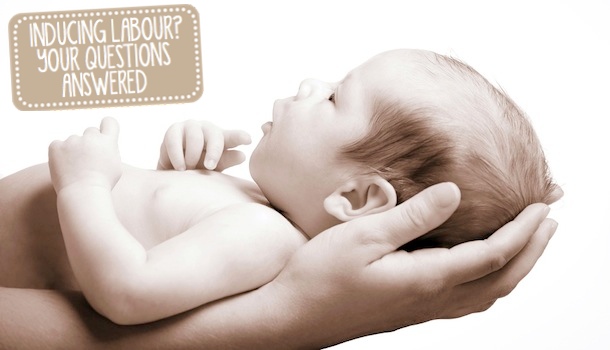
Being pregnant is an exciting time — but when you’re closing in on 40 weeks and feeling uncomfortable, tired and (let’s face it in Singapore) sweaty, just having the baby can seem like the most appealing option! We spoke with Dr. Ann Tan, a Singapore-based fertility specialist and obstetrician to get her take on the pros and cons of inducing labour (and what you can expect!).
What is a labour induction?
Induction of labour is the procedure used to kick start the labour process, with a view to a vaginal delivery.
What is involved in a labour induction? Will I need to stay in the hospital overnight?
There are two methods of induction, Medical Induction or Surgical Induction. A medical induction usually involves the administration of intravaginal prostaglandin (a gel that is placed on the cervix!) to cause mild uterine contractions that lead to the dilatation of the cervix (and the start of labour!).
Surgical induction involves artificially rupturing the membranes (so when the doctor says he’s going to “break your waters” this is what he’s talking about!) and giving intravenous Oxytocic agents via an IV to kick-start uterine contractions. With any induction, it’s always best to play it safe, so they are nearly always performed in a hospital setting.
What are the reasons why I might need an induction?
There are two main reasons why you might need an induction – either for maternal or fetal reasons. Maternal reasons, like a post dates pregnancy (the pregnancy is going beyond the expected due date and there are potential risks to continuing the pregnancy any further), a reduction in fetal movements that might indicate decreased fetal wellbeing, a reduction in placental function or where a natural delivery is desired but the baby is getting too big, are all reasons why an induction might be suggested.
Fetal reasons include Intrauterine Growth Restriction, where the baby becomes malnourished within and is better off being fed outside of the uterus, or premature rupture of the membranes (where there is a risk of acquiring an infection if there is prolonged exposure before delivery) are also common reasons.
Just remember…an induction is performed with the best interests of the mother and baby in mind!
How long can I go past my due date before I need to start thinking about an induction?
One should discuss the need for an induction with their doctor, taking into consideration the medical issues involved. There is a slight increase in infant mortality for births in the 41st, and particularly, 42nd week of gestation, as well as a slightly higher risk of injury to the mother and child at this point, due to the size of the baby.
There are also instances where a couple may request for an induction so that their baby is born on an auspicious date. In situations like these, there is potentially a higher risk of the induction failing to work as the cervix may not be favourable or the baby is less matured than expected. In these cases, an emergency caesarean would be required.
What happens if the induction doesn’t work?
If an induction fails, then an emergency caesarean section is often required. Induction of labour is most likely to be successful (resulting in the natural delivery of your baby!) when a woman is close to or in the early stages of labour. The Bishop score is often used to determine the likelihood of success (a pre-labour screening tool that predicts whether an induction of labour will be required).
I’m keen to avoid an induction — what advice do you have for getting labour started naturally?
The following strategies have been helpful for many couples:
- Nipple stimulation and breast massage might lead to the release of the hormone oxytocin, which can lead to contractions.
- Having sex may also help push labour into starting due to the inherent prostagladins in the semen.
- Other common methods that are often touted as being helpful include more walking, climbing stairs, or eating spicy foods (unfortunately these do not have strong evidence to support their effectiveness!).
Any other advice?
Understand why you might need an induction in the first place and find out what the risks are by asking about the condition of the cervix prior to induction. It’s also best to understand the implications of not agreeing to an induction, especially if the fetus is in jeopardy. Then you can make a calculated and considered decision with your obstetrician. There are occasions when induction may not be the best call and an elective caesarean section may be the safer alternative. Conversely, some caesarean sections can be avoided by allowing an induction to be tried first.
Dr. Ann Tan is a gynecologist, obstetrician, IVF and fertility specialist based at the Women and Fetal Centre Singapore. She is the former Chief of Fetal Maternal Medicine at the Singapore General Hospital and is the first Singaporean to hold the Diploma of Fetal Medicine from the Fetal Medicine Foundation.She is also a Ministry of Health Certified IVF Clinician. Dr. Tan is dedicated to helping her patients achieve their dream of having healthy babies. You can contact her at +65 6887 1103 or at [email protected]






 View All
View All





 View All
View All









 View All
View All





![[𝗦𝗔𝗩𝗘 𝗧𝗛𝗜𝗦] 𝗞𝗶𝗱-𝗔𝗽𝗽𝗿𝗼𝘃𝗲𝗱 𝗗𝗲𝘀𝘀𝗲𝗿𝘁 𝗦𝗽𝗼𝘁𝘀 𝗬𝗼𝘂 𝗖𝗮𝗻 ‘𝗘𝗮𝘁 𝗳𝗼𝗿 𝗙𝗿𝗲𝗲’ 𝗪𝗶𝘁𝗵 𝗖𝗗𝗖 𝗩𝗼𝘂𝗰𝗵𝗲𝗿𝘀! 🍦🍩🧁😉
Before you ask “Can use CDC voucher?” Yes, you definitely can! These spots are perfect for an after-school treat, weekend fun, or just saying “yes” to dessert without saying goodbye to your wallet.
Comment “Sweet” or tap the link in bio for more foodie recommendations!
Got a fave kid-friendly spot that accepts CDC vouchers? Let us know in the comments too!
.
.
.
.
.
.
.
#CDCVouchersSG #SGMumLife #KidFriendlySG #FreeDessert #HeartlandEats #SweetTreatsSG #SGParents #FamilyFunSG #WafflesAndIceCream #BudgetParenting #ThingsToDoWithKidsSG #SGCafes #SupportLocalSG #KidsEatHappy #CDCAdventures](https://www.sassymamasg.com/wp-content/plugins/instagram-feed/img/placeholder.png)
